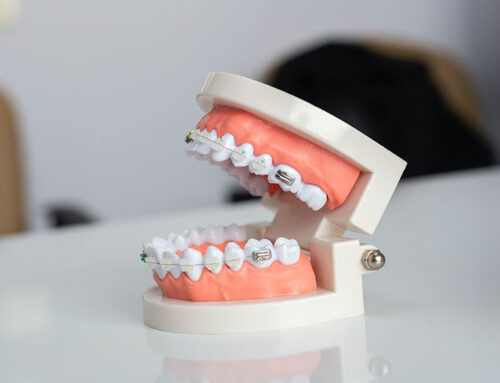Braces or Clear Aligners: Choosing the Right Orthodontic Treatment
When it comes to orthodontic treatment, one of the most common questions patients have is whether to opt for braces or clear aligners. The decision depends on various factors, including treatment goals and lifestyle preferences. In this article, we will explore the key considerations for both braces and clear aligners, helping you make an informed choice.
Braces: Tried and True
Braces have been a popular orthodontic treatment for decades and are effective in addressing most orthodontic problems. Modern braces come in different options, including stainless steel, tooth-colored ceramic, and even gold-colored brackets.
Visibility:
While braces now offer more discreet options such as tooth-colored brackets or lingual braces that go behind the teeth, certain components like rubber bands, wires, or gold-colored brackets may still be visible. However, you have the freedom to choose the color of your rubber bands.
Removability:
Braces remain affixed to the teeth throughout the treatment duration, ensuring stability and optimal results. Though not removable, this eliminates the risk of losing them, unless you consume hard and sticky foods.
Comfort:
There might be some initial discomfort when braces are placed or adjusted, and brackets and wires can cause temporary irritation to the mouth tissues. However, most patients quickly adapt to the braces and eventually forget they’re even wearing them.
Hygiene:
Maintaining good oral hygiene is crucial with braces. Regular brushing and flossing are necessary to keep teeth, gums, and braces free from plaque and food debris, preventing enamel damage and gum inflammation.
Diet:
Patients with braces should avoid hard, sticky, crunchy, and chewy foods to prevent bracket breakage or wire displacement. It’s also advisable to choose water over carbonated drinks, flavored waters, or sports drinks, as they contain acids and sugars that can harm tooth enamel.
Clear Aligners: A Discreet Option
Clear aligners are transparent, custom-made trays that gently exert pressure on the teeth, gradually repositioning them. They are a part of the technological advancements in orthodontic treatment, offering a more inconspicuous option.
Visibility:
Clear aligners are virtually invisible due to their clear, thin, plastic-like material. This allows individuals to achieve a straight smile discreetly. Tooth-colored attachments are sometimes used to guide the teeth into place, further minimizing their appearance.
Removability:
One of the significant advantages of clear aligners is their removability. They can be taken out while eating, brushing, flossing, or for short periods during work or social occasions. However, it’s crucial to wear them as prescribed, typically for at least 22 hours a day and in the correct sequence.
Comfort:
Switching to a new set of aligners may cause some initial discomfort, but it can be easily managed. It’s important not to remove aligners due to discomfort, as they need to be in the mouth to fulfill their purpose.
Hygiene:
When wearing aligners, it’s critical to avoid consuming soft drinks, flavored waters, or sports drinks. These liquids can seep into the aligners, leading to teeth staining and decay if they contain acid and sugar. Prioritizing spotless teeth before wearing aligners is essential.
Conclusion:
The choice between braces and clear aligners ultimately depends on individual treatment goals and lifestyle preferences. Regardless of the chosen appliance, proper diagnosis and treatment planning by an experienced orthodontist are crucial. By selecting an orthodontist who is a member of the American Association of Orthodontists (AAO), like Murray Orthodontics, you can be confident that you are receiving treatment from skilled specialists with the necessary education and expertise.




